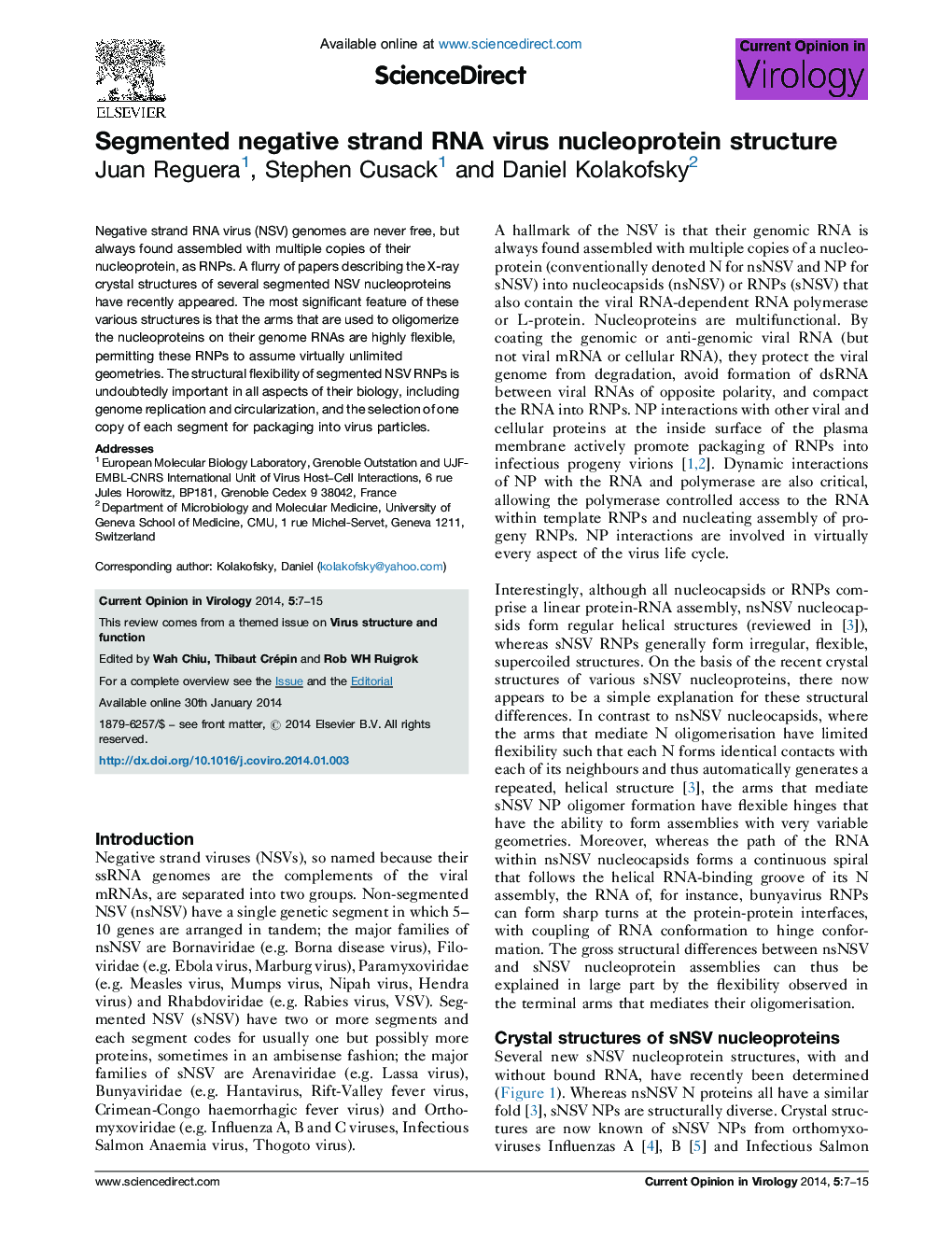| Article ID | Journal | Published Year | Pages | File Type |
|---|---|---|---|---|
| 5806813 | Current Opinion in Virology | 2014 | 9 Pages |
â¢In monomeric nucleoproteins not bound to RNA, the positive charged RNA binding groove is filled intra-molecularly.â¢NP oligomerisation occurs when intra-molecular NP interactions are converted into equivalent inter-molecular NP-NP interactions upon binding to genome RNA.â¢The gross structural differences between nonsegmented and segmented NSV RNPs are due to the flexibility of the terminal arms that mediate segmented NSV oligomerisation.â¢The RNA of segmented NSV RNPs can form sharp turns at the protein-protein interfaces, enormously expanding the structures that can form.â¢The structural flexibility of segmented NSV RNPs is important in all aspects of their biology.
Negative strand RNA virus (NSV) genomes are never free, but always found assembled with multiple copies of their nucleoprotein, as RNPs. A flurry of papers describing the X-ray crystal structures of several segmented NSV nucleoproteins have recently appeared. The most significant feature of these various structures is that the arms that are used to oligomerize the nucleoproteins on their genome RNAs are highly flexible, permitting these RNPs to assume virtually unlimited geometries. The structural flexibility of segmented NSV RNPs is undoubtedly important in all aspects of their biology, including genome replication and circularization, and the selection of one copy of each segment for packaging into virus particles.
